In military planning, it is essential to keep abreast of the potential adversary’s capabilities. The main reason the Indian Air Force (IAF) needs a fifth-generation fighter is to maintain approximate parity if not superiority over the People’s Liberation Army Air Force (PLAAF) and to a lesser extent the Pakistan Air Force (PAF). Yet, most analysts believe it will take time for the PLAAF to build a large fleet of fifth-generation fighters, overcoming the problems of incorporating true stealth and sensor fusion-enabled situational awareness. Meanwhile, it will continue to operate mainly fourth-generation fighters. And that goes for the PAF too. If the IAF wants a fifth-generation fighter but does not want the FGFA, what are its options?
There is a firm plan to acquire 114 new multi-role single-engine jets for which the US Lockheed Martin F-16 Block 70/72 Fighting Falcon and Sweden’s Saab JAS 39E Gripen are strong contenders…
The Indian Air Force (IAF) faces a grim problem of numbers – it simply does not have enough combat squadrons. Its strength of 33 squadrons today is not just the lowest in a decade, but is likely to drop further as 11 squadrons of vintage Mikoyan MiG-21 and MiG-27 fighters inevitably make their exit within the next five years. That is not all. About ten years from now, it will be the turn of the twin-jets; eight squadrons of Hindustan Aeronautics Limited (HAL) built Jaguar strike aircraft and Mikoyan MiG-29 interceptor aircraft must be withdrawn from service.
In October 2017, the Chief of the Air Staff, Air Chief Marshal BS Dhanoa, stated that by 2032, the IAF’s squadron strength would reach its authorised levels. In the absence of details, however, this appears to be something of a fond hope for the IAF’s centenary year instead of a realistic forecast. While there is a long lead time for any new fighter to be inducted, their rate of retirement is currently much faster than the pace of replacement. Hence the numbers will continue to fall – perhaps as low as 25 squadrons by 2022, against the 42 necessary to tackle a two-front collusive threat from Pakistan and China.
Replace or Repent
This parlous situation has not developed overnight and the Indian government has been taking steps to provide replacements. However, conflicting considerations need to be reconciled, crucial contracts need to be signed and huge financial outlays are necessary for the jets to materialise. And the pace of official decision making is sluggish to say the least.
In September 2016, India signed a €7.87 billion (approximately Rs 59,000 crore) deal with France for the purchase of 36 Dassault Rafale twinjet multirole fighter aircraft. These will be delivered from September 2019 onwards. Also by 2019-20, 42 more Sukhoi Su-30MKI twinjet air superiority fighters, built under licence by HAL, are scheduled to complete deliveries to make up the IAF’s planned 272-strong Su-30MKI fleet. In addition, 123 HAL Tejas Mark 1/1A multi-role light fighters are expected in the next few years. However, HAL is yet to succeed in ramping up production from eight Tejas a year to the desired sixteen.
Lastly, there is a firm plan to acquire 114 new multi-role single-engine jets for which the US Lockheed Martin F-16 Block 70/72 Fighting Falcon and Sweden’s Saab JAS 39E Gripen are strong contenders. If all goes well, this contract should be signed in less than 18 months and the first batch of aircraft in fly-away condition may arrive in about five years. This may be followed by production of the remaining jets within the country in pursuance of the government’s ‘Make in India’ initiative.
In 2005, the Lockheed Martin F-22 Raptor entered service with the United States Air Force (USAF), becoming the world’s first combat-ready fifth-generation fighter…
Most of these aircraft planned for induction are capable combat jets. However, they belong to the fourth generation – an informal but convenient measure of technological superiority. Although most fourth-generation fighters have impressive strike and interception capability, they are rather vulnerable to the lethal air defences that the world’s leading nations have deployed. That is why many advanced air forces, including the People’s Liberation Army Air Force (PLAAF) of China, are inexorably converting at least a portion of their fleet to the fifth generation. In fact, the Royal Australian Air Force (RAAF) is set to become the first entirely fifth-generation force by 2025. With the IAF’s combat strength already plunging, can it afford to be left behind in this emerging key metric of modern air power?
Generations in Evolution
It was in the 1990s that jet fighters first began to be classified by generation. Although the practice quickly gained popularity, most categorisation is rather vague. This is partly because there can be no clear dividing line between generations. Fighter aircraft are usually continuously upgraded in their airframes, engines, avionics and armament carriage. This is an evolutionary rather than revolutionary process and several modern fourth-generation fighters have elements that otherwise fall naturally into the fifth generation.
A fifth-generation multi-role fighter is a highly coveted asset. Its features are generally taken to include all-aspect stealth even when armed, Low Probability of Intercept Radar (LPIR), high-performance airframe, high-performance engine capable of supercruise (supersonic cruise without afterburner), advanced avionics with long-range sensors and networked data fusion providing full battle-space situational awareness.
In 2005, the Lockheed Martin F-22 Raptor entered service with the United States Air Force (USAF), becoming the world’s first combat-ready fifth-generation fighter. The F-35B Lightning II became operational with the US Marine Corps in July 2015 and the F-35A was declared combat-ready by the USAF in August 2016. The only non-US fifth-generation fighter to enter fully operational military service is China’s Chengdu J-20A and it achieved this distinction with the PLAAF in September 2017.
The world’s leading fifth-generation fighter, the F-22 Raptor, is a single-seat, twin-engine super-manoeuvrable aircraft that extensively employs stealth technology…
The Long US Lead
The world’s leading fifth-generation fighter, the F-22 Raptor, is a single-seat, twin-engine super-manoeuvrable aircraft that extensively employs stealth technology. It was initially designed and developed as an air superiority fighter. When armed and ready to operate in this role, it has an incredibly tiny Radar Cross Section (RCS) of .0001 square metre, about the size of a marble. The lower the RCS, the less visible the aircraft is to air defence radar, making it harder to detect, track and fire at. And this is a massive platform of maximum take-off weight of 38 tonne, which would otherwise have been a sitting duck for any modern missile.
The F-22 has additional capabilities including ground attack, Electronic Warfare (EW) and signals intelligence, albeit with some loss of stealth qualities. However, its high cost led to the closure of the F-22 production line in 2012 after only 187 aircraft out of the initially planned 750 had been delivered to the USAF. By this time, the estimated cost, including development and testing, was $412 million per aircraft.
The F-22 was followed by the Lockheed Martin F-35 Lightning II, a family of single-seat, single-engine, fifth-generation multi-role fighters designed for ground attack and air superiority missions. The F-35 has three models: the F-35A Conventional Take-Off and Landing (CTOL) variant, the F-35B Short Take-Off and Vertical Landing (STOVL) variant, and the F-35C carrier-based Catapult Assisted Take-Off But Arrested Recovery (CATOBAR) variant. The F-35 is billed as the most expensive military weapons system in history. With the US now boasting of two fifth-generation fighters, other countries are trying to close the gap.
Chinese Chequers
The Chengdu J-20A ’Black Eagle’ is Asia’s first fifth-generation fighter. This single-seat twin-jet gives the war-fighting capabilities of the PLAAF a major boost and may pose a significant threat to Indian forward bases due to its radar evading properties, long range and significant weapons load. It is currently powered by two Russian NPO Saturn AL-31F engines but is planned to be upgraded with new, more powerful turbofans. China is developing the Xian WS-15 Emei engine, which is expected to be more fuel efficient than the AL-31F and would enable the J-20A to super cruise.
As is well known, China is pouring vast sums of money into military modernisation…
As is well known, China is pouring vast sums of money into military modernisation. Convinced of the utility of stealth technology, it is not content with a single stealth programme. The Shenyang J-31 ‘Gyrfalcon’ or Falcon Hawk is another Chinese fifth-generation fighter under development. It is a single-seat twinjet intended to provide advanced capabilities in close air support, aerial bombing and air interdiction roles. It can also be used as a carrier-based fighter. It is apparently intended mainly for export, in which case the Pakistan Air Force (PAF) may get some aircraft. Initial operational capability is expected by 2020.
Brothers in Arms: the Su-57 and the FGFA
Russia’s Sukhoi Su-57 fifth-generation fighter is a single-seat, twinjet multirole aircraft under development. It is designed for air superiority and strike missions and intended to counter the US F-22 Raptor and F-35 Lightning II. Its first flight was in January 2010 and it is scheduled for delivery to the Russian Air Force (RAF) from 2019 onwards. However, like the Chinese J-20A, the Su-57 is underpowered. Its NPO Saturn 117 engine does not permit supercruise, but a more powerful truly fifth-generation engine, the Izdeliye 30 (Product 30), is currently under testing. With the new engine, the Su-57 should be able to cruise without afterburner at speeds of over Mach 1.5.
The Su-57’s progress has been of particular interest for the IAF, because the IAF’s hopes of getting its own fifth-generation fighter are intimately linked to it. It was a decade ago that India and Russia began exploring the possibility of a joint stealth fighter programme. In 2010, both sides signed a $295 million design contract for the co-development of the Sukhoi/HAL Fifth Generation Fighter Aircraft (FGFA) or Perspective Multi-role Fighter (PMF), based on the Su-57 prototype – the Sukhoi T-50 or PAK FA. Since then there have been many twists and turns, rising costs, prolonged delay, and much heartburn over the project.
It was agreed that the FGFA would have 43 improvements over the T-50, including stealth, supercruise, advanced sensors, networking and combat avionics. The IAF was initially keen on the FGFA, seeing it as the only viable fifth-generation option. It wanted as many as 214 FGFA but the number was progressively whittled down. It hoped to get its first lot of fighters by 2017, but that has turned out to be a mirage. More recently, there have been serious doubts over how the Su-57 would turn out because Russia itself wanted just a dozen aircraft, preferring to procure more Su-35 and Su-30SM jets instead.
As the years passed and the T-50 began to look increasingly uninspiring, the IAF made no secret of its dissatisfaction. One grouse is that despite its low work share in the joint development project, India has to pay 50 per cent of the development cost. Another is that unless the Russians agree to substantial Transfer of Technology (ToT), the IAF will be perpetually dependent on it for components, spares and even minor modifications. And not only does the FGFA come at a high price, it will be expensive to maintain as well.
Besides, there seem to be serious design issues, especially with the stealth engineering. The Russians claim the Su-57’s RCS will be less than 0.5 square metres against the F-35’s RCS of 0.2 square metres, but the IAF is unimpressed. Indeed, anyone who has operated Russian aircraft learns to take such claims with a pinch of salt. The reliability of the crucial AESA radar is also in doubt. In addition, the engine is a worry. As mentioned, the Su-57’s current turbofan does not permit supercruise. Although the Izdeliye 30 engine is expected to be ready soon, the IAF’s experience with Russian engines in general and the NPO Saturn AL-31FP turbofan fitted on the Su-30MKI in particular, has been anything but happy. They have been plagued by failure in the air, poor operational serviceability and shortage of spares.
In order to continue the FGFA project, India and Russia next need to sign a development contract each committing to spend over $3 billion…
In order to continue the FGFA project, India and Russia next need to sign a development contract each committing to spend over $3 billion. The IAF must also place a firm order for the jets that might enter production eight to ten years after signing of the contract. An expert committee appointed by India’s Ministry of Defence submitted its report in July 2017, and was ostensibly in favour of proceeding with the project, opining that the FGFA would be a useful springboard for India to develop its own fifth-generation Advanced Medium Combat Aircraft (AMCA). However, the IAF is now deeply sceptical, believing that if the base model T-50 is of doubtful worth, it is unlikely that the India-specific features will improve it. Rather than risk being stuck with a white elephant, the IAF apparently prefers to terminate the project and wait for the indigenous AMCA to materialise.
AMCA’s Promise
The HAL AMCA is a single-seat, twin-jet, super-manoeuverable multi-role fifth-generation fighter under development. While its design is the responsibility of the Aeronautical Development Agency (ADA), manufacture will be undertaken by HAL. Preliminary design work on the AMCA began in 2008, but it officially started only in 2011. For the AMCA to be a truly indigenous effort, India’s aerospace technologists need to develop stealth technology comparable with the US F-35, a thrust vectoring engine capable of super-cruise and its planned AESA radar. The AMCA’s RCS is low thanks to serpentine air-intakes, an internal weapons bay and extensive use of composites and other radar-absorbent materials. It features relaxed static stability with a quadruplex digital fly-by-optics flight control system.
The AMCA requires two 110-125 kN class turbofans for its planned maximum takeoff weight and for supercruise capability. The engine expected to power it is either the Gas Turbine Research Establishment’s (GTRE) K9 or the K10, which have succeeded the GTRE Kaveri engine. GTRE and French multinational Safran are working together to fix all issues and make the AMCA engine ready by 2019. A possible fall-back option if this approach fails is the trusted General Electric F414 that is slated to power the Tejas Mark 2. The AMCA project can really take-off only after its engine is firmed up. According to ADA estimates, the maiden flight by 2030 followed by low-rate production by 2035 is likely.
Rather than risk being stuck with a white elephant, the IAF apparently prefers to terminate the project and wait for the indigenous AMCA to materialise…
Fifth Generation – A Mixed Blessing
Are fifth-generation fighters like the AMCA worth the price? By virtue of their low-observable characteristics, these jets can safely transit through some of the most fearsome air defences of the kind China has. Therefore, they would give the IAF a huge advantage. They can also be paired with vulnerable fourth-generation aircraft such as the Tejas to make the combined formation better able to defend itself against airborne attackers or to penetrate strong defences. Thus they would serve as a force multiplier to compensate for the IAF’s missing squadrons.
However, developing a genuine fifth-generation fighter is a fiendishly difficult enterprise. It must be a clean-sheet design with numerous performance trade-offs incorporated right from the start. This could take decades. Even a technological giant like the US needed billions of dollars and immense effort to develop the F-22 Raptor’s integrated avionics and control suite. And despite the F-22’s success, the F-35 Lightning II was stuck for years over the software required to achieve data fusion across its advanced sensors. In view of the huge sums involved it seems unlikely that India’s government would sanction two full-fledged fifth-generation fighter programmes – the FGFA and the AMCA.
Besides, with several nations now attempting to jump onto the stealth bandwagon, a counter is inevitable and it is fairly likely that advances in sensors and computing power will triumph over stealth within a decade. A stealthy aircraft is easier to render invisible to radar if it employs electronic jamming as well. That is why futuristic sixth-generation fighter interceptors like the USAF’s Penetrating Counter Air programme will be stealthy, but will also lay great emphasis on advanced EW systems that can be constantly improved to match the emerging threat.
Meanwhile, fourth-generation aircraft manufacturers are fighting back against attempts to devalue their offerings. They have a point. Aircraft like the Dassault Rafale and the Eurofighter Typhoon have high standards of sensor fusion, thrust vectoring, supercruise capability, AESA radars and the like – in fact everything that goes into a fifth-generation fighter, except stealth. And they come with much lower cost and ease of maintenance. Even in the USAF, that pioneered stealth, fourth-generation aircraft will form the bulk of the combat fleet for decades to come, with fifth-generation jets available in much smaller numbers.
Developing a genuine fifth-generation fighter is a fiendishly difficult enterprise as it must be a clean-sheet design with numerous performance trade-offs incorporated right from the start…
Limited Options
However, in military planning, it is essential to keep abreast of the potential adversary’s capabilities. The main reason the IAF needs a fifth-generation fighter is to maintain approximate parity if not superiority over the PLAAF and to a lesser extent the PAF. Yet, most analysts believe it will take time for the PLAAF to build a large fleet of fifth-generation fighters, overcoming the problems of incorporating true stealth and sensor fusion-enabled situational awareness. Meanwhile it will continue to operate mainly fourth-generation fighters. And that goes for the PAF too. If the IAF wants a fifth-generation fighter but doesn’t want the FGFA what are its options?
For obvious reasons the Chinese J-20A and J-31 may be ruled out. Although some other fifth-generation fighters are under development, including Turkey’s TAI TFX, South Korea’s KAI KF-X and Japan’s Mitsubishi X-2 Shinshin. None of these are viable for the IAF. What about the Lockheed Martin F-35A Lightning II? The Indo-US military relationship has grown more cordial in recent times and the IAF is already inducting several modern military aircraft from the US. These include the Boeing C-17 Globemaster III large transport, the Lockheed Martin C-130J Super Hercules transport, the Boeing AH-64E Apache attack helicopter and the Boeing CH-47 Chinook helicopter. There is a good chance that the Lockheed Martin F-16 will soon be selected to bolster the IAF’s combat fleet, so the F-35A might also be a possibility. It may not be too expensive. According to Lockheed Martin, the cost of each F-35 is already below $95 million and it hopes to reduce that to $85 million in a few years.
However, the IAF would need to judiciously evaluate the F-35A before opting for it. The aircraft has been roundly criticised mainly because of huge time and cost overruns and because it is allegedly plagued with design flaws. Besides, Lockheed Martin already has a large order book. The IAF would be a late customer and might not get the desired jets for at least 10 to 12 years. And US military supplies usually come with negligible ToT and with strings attached – neither of which appeal to this country.
That is why the IAF appears to be of the view that the best option in the current circumstances is to forget the FGFA mirage and back the indigenous AMCA to the hilt, making it a strong prospect. At the same time, it could spend the money saved on the FGFA deal to boost its shrinking fourth-generation fleet. In fact, the quickest way for the IAF to induct a sizeable fleet with all fifth-generation features, except stealth, would be for its Rafale order to be doubled or even tripled. The Su-30MKI, which will remain the backbone of the IAF’s combat fleet for decades, also needs to be comprehensively upgraded. These two measures would give the IAF enough breathing space till the HAL AMCA becomes its prized fifth-generation fighter.




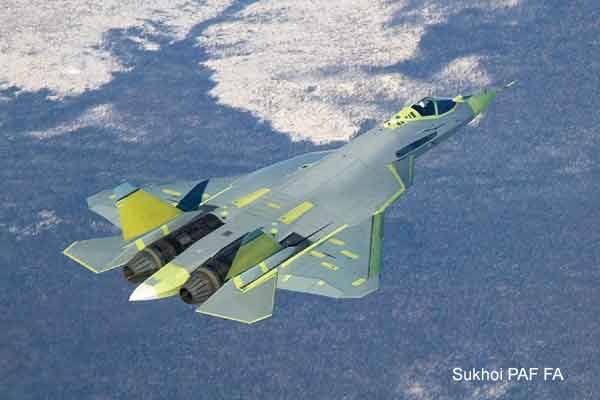
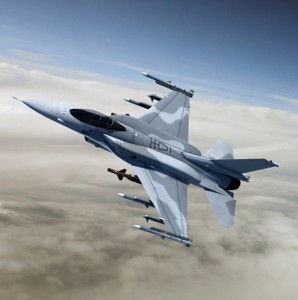
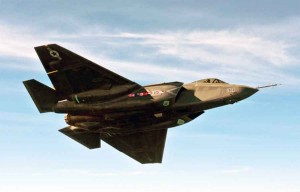
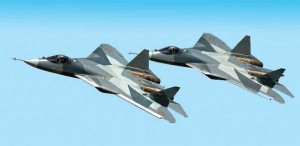
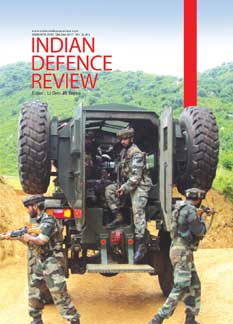
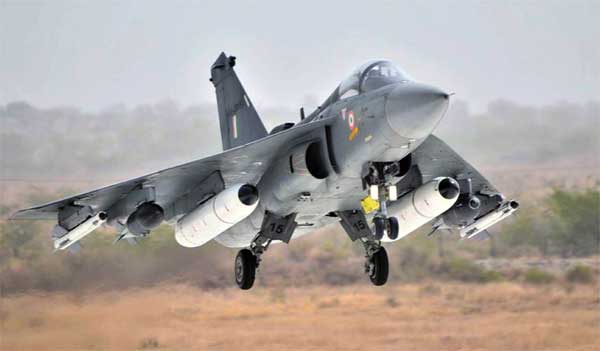

India needs people who have studied the geography of India. But in civilians there
are people took an interest to study geography to find of actual requirement of India to fight against. Pakistan and China because the IAF officers failed to do so. They are only pilots and not managers or war strategists. None of the countries can make a fighter plane which can escape from all odds. We should not use two engines on stealth plane. It cannot escape from ant radiations missiles. That is the reason the USA designed F 35 with a single engine. One Isreal’s F 35 damaged due to bird hit. The 21st century is the age of missiles and drones. All these fighter plane are designed to use in plains and not meant for high altitude like the Himalayas. F 35 ceiling is only. 50000 feet. The passes in the Himalayas are situated at a height of 15000 to 20000 feet. The anti-aircraft gun 40 mm L70 range is 12 Km. (39370. feet). It does not require any radar. Suppose one Pass height is 15000 feet. That meanss fighter plane ceiling will come down to 35000 feet. This height is within the striking distance of anti-aircraft guns. Whereas Anti- Aircraft gun will go up in hilly areas. 39370 + 15000 = 54370 feet. So the first thing this govt has done was that they upgraded all the old anti- Aircraft guns range and increased the accuracy by using latest avionics. like they have done in the case of Dhanush. The majority of the IAF officers do not know this simple calculation and demanding more fighter planes. So this Govt is not going to spend billions of dollars on stealth planes. We are in a far better position than China and Pakistan. Indian Army requires only transport planes, not fighter planes. In all the pass both country Soldiers are placed at a distance of 90 feet apart. So Indian army will not ask for air support.. So IAF does not require any fighter plane..34 squadrons is quite enough.
Is it a neccassity or envy that we got to have a fifth generation plane because China has it.
It will another five years that it is in squadron service there. Chinese are in a haste to tell the world that they have done this or done that… On copied and stolen technology, it takes twice as long to operationalize. So you got time, Chinese over confidence is to be discounted. Moreover all this stealth fighters, can these operate from 5,000 ft height of Tibet plateau. If it is half load and half fuel, it is a great disadvantage to them.
For India, the better choice is F35 but it is years away in negotiation and communication agreements, then it comes to factory production capacity.
So relax.
May be more attention is to be paid to the Indian Navy. It is accident prone. It lost two Russian subs to accidents, a ship overturned while being pulled out of dry docks. The leased Russian nuclear submarine suffered a sonar dome damage when coming into Vishakhapatnam Harbour and worst of all somebody left the hatch of Indian made nuclear submarine open during the dive.
So my dear Group Captain, turn your attention away from buy… buy… buy. Pay more attention to – what is wrong in training and discipline in the services.
Nice thoughts sir but for more Rafaels government need to cancel SEF competition and IAF need to adopt Tejas mk1 in considerable numbers and help ADA & HAL to fast track the development of Tejas mk2. HAL also need to improve the rate of assembling of aircrafts per year. Government must allow private sector in R&D and production lines will also approve for them.
Mirage for war material merchants but reality for local talent.
Mirage is not that good for war situation, modern radars can take them down easily.
Perfectly summed up, moreover iaf need to stick to 3 or 4 platforms max and stop looking for new single enginez.2 indigenous (Tejas and amca) and 2 foreign maal (rafale and su ) should be enough for us to push into 2035 as a major airforce .More rafales will also cost less as follow on order and more nos will help spares depart .And govt should pump more money into research , usa spent almost half a trillion on fifth gen platforms we are struggling to pump a billion dollars here. considering our economy size we can easily spend 10 billion dollars into research and development of next gen aviation tech .it’s high time we need to build ourselves .
What stops us from using our superior IT expertise from developing softwares or technology which can hack the enemy fighter plane systems, which after all works on computer technology.
Oh really….u think it works like that…